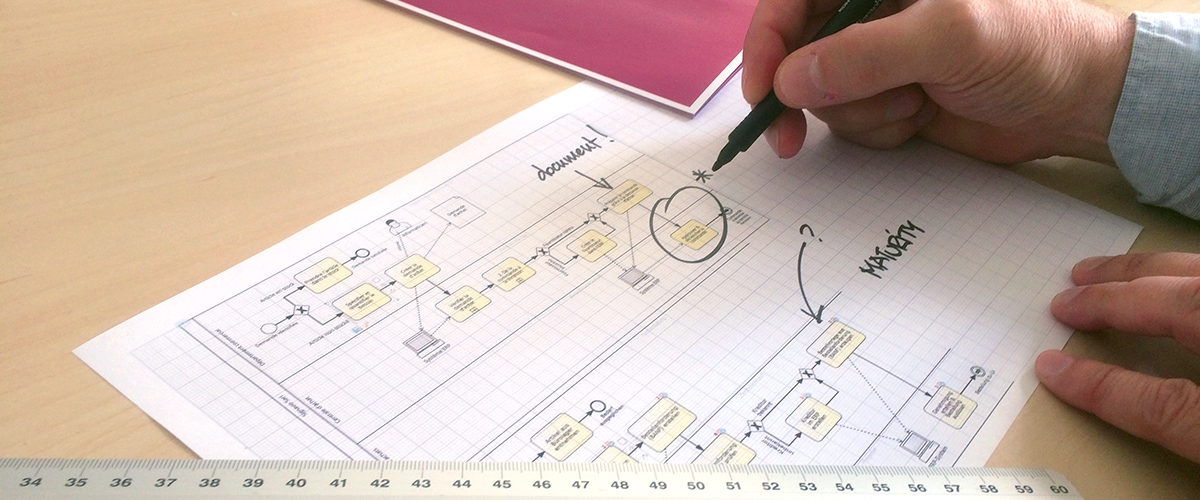Originating with Phil Crosby’s book Quality is Free in 1979, Business Process Maturity Models have since seen a number of iterations.
Most of the models available use the same five steps to denote different levels of process maturity:
- Initial
- Managed
- Defined
- Quantitatively managed
- Optimized
Why use a BPMM?
Continual gains in efficiency and quality of products and services is imperative for all businesses, however, without a method or framework to evaluate performance and guidelines to steer improvement efforts and resolve issues, organisations may be left to flail in the dark, wasting resources and opportunities without making progress.
In a nutshell, BPMMs create a metric by which to measure the process performance and evolution of an organization, as well as actions and next steps to proceed, based on the current situation.
For example, maturity models have been used for a number of years in the implementation of new business technologies. IT implementation projects come with many risks capable of undermining the value brought by the application or leading to the project being scrapped altogether – often at huge expense.
Research has found that the major reason for business IT implementation failures is underlying weaknesses in the business processes targeted by the implementation projects. In this context, BPMMs therefore provide essential means of evaluation, as well as clear guidance on improvement opportunities, in order to validate organizational readiness for new applications.
Of course, business process evaluation is not restricted to specific events like IT implementation, but is characteristic of continuous improvement efforts.
How does an organization move from one level of maturity to the next?
The five levels of maturity outlined earlier reflect changes in an organization undertaking the BPM maturity journey in terms of the degree to which processes are integrated and standardized. Moving from one level of maturity to the next entails enlarging the view and scope of processes in the business. This can be seen when the Seven Tenets of Process Management are overlaid with the maturity model levels. (AQPC does a really great job of playing out the maturity model and setting out the characteristics of organizations at each level here or here. You may need to register to access the paper).
Interestingly, APQC has identified a specific point in the BPMM journey where many organizations fail to transition, termed the Process Maturity Gap. The gap is between level two (some processes organized), and level three (most processes organized). Related to the organization’s ability to get everyone on board (buy-in), and scale and standardization, the gap is the point where business processes break out of their silos, and form the beginning of cross-functional, end-to-end processes.
Crossing the Process Maturity Gap successfully
As consistency of language used is essential for models to be understandable and usable by everyone in the business, creating a scalable structure and system for governance and accessibility/transparency, as well as easy feedback mechanisms, is vital. A quick look at the characteristics list of businesses at each level, as defined by APQC, reveals a clear opening for a software solution to facilitate the scaling of departmental BPM initiatives, to reduce manual labour to manage a knowledge hub, and increase engagement and speed of improvements.
Software is no silver bullet to magically make all organizational ills disappear, but the right solution to monitor progress, and effectively govern BPM within an organization can greatly increase the success of initiatives as organizations launch themselves over the gap, to level three. Creating an easily updated, and crucially - scalable - single source of truth; facilitating collaboration and feedback; and dissolving the visibility barriers between functional units creates the transparency and control required to model how the whole organization produces value. You can dive deeper on what to consider when creating your organization’s single source of truth with our white paper “How to Create a Single Source of Truth: A Guide for Business Transformation.”
Conclusion
This is just a short explanation of what Business Process Maturity Models are, why you would use them, one of the key pitfalls, and a solution in the form of a scalable single source of truth for the whole organization.
Business Process Maturity Models are an objective way to evaluate and track progress towards your target end-state. In the end, each organization will face many obstacles on the way to process-centricity, and utilizing a BPMM will help you prepare for, mitigate, and overcome those challenges.
Kick the tires on Signavio's full Process Transformation Suite free for 30 days here.




